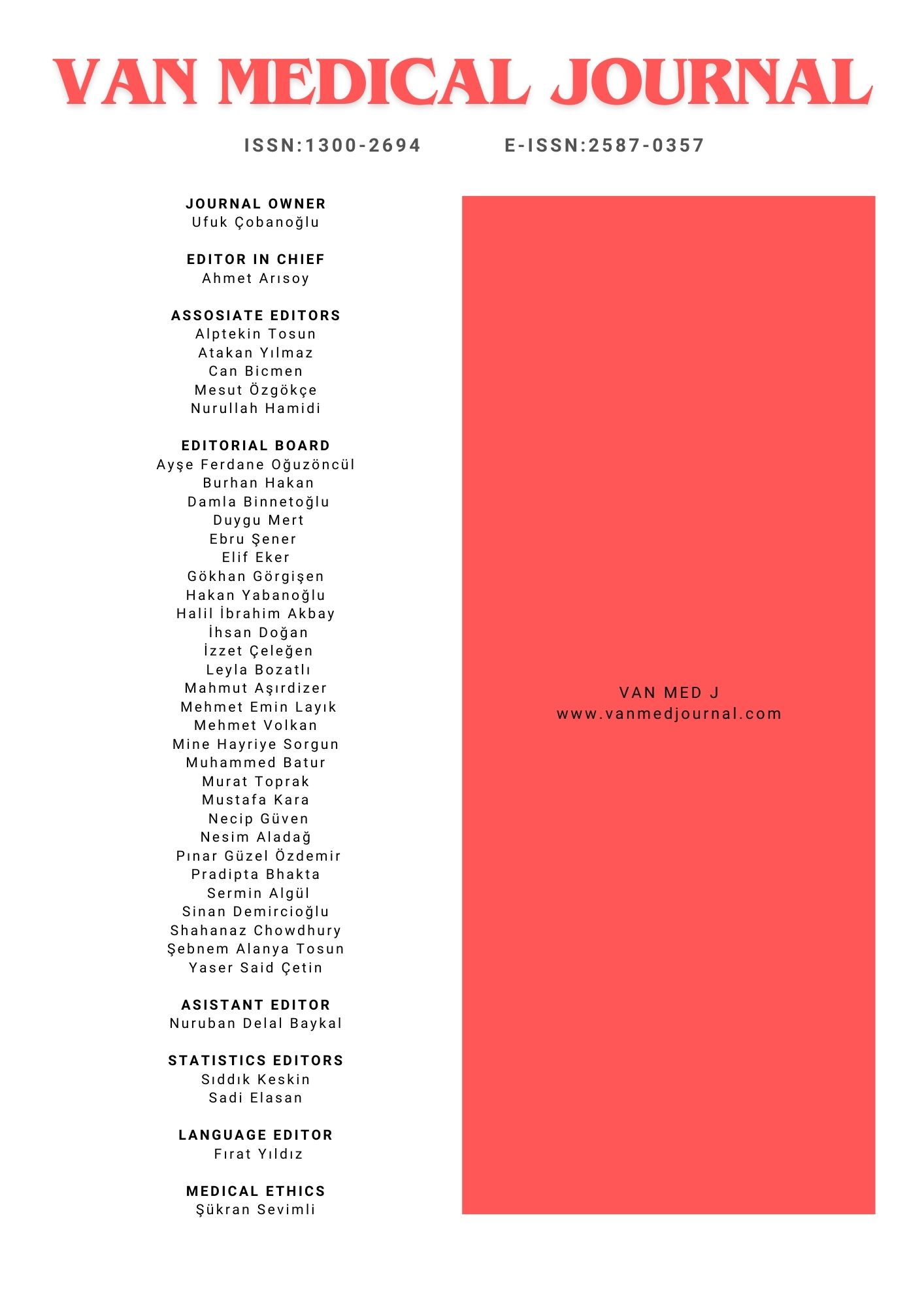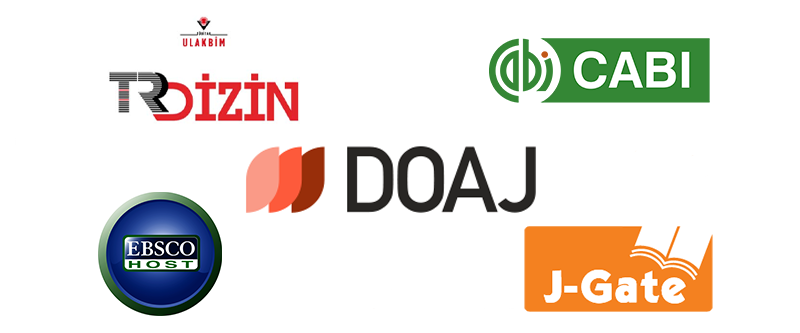About The Journal
Adherence to Ethical and Publication Guidelines
The Van Medical Journal is strictly committed to the highest standards of integrity and quality in medical publishing. The journal rigorously adheres to the ethical guidelines and best practices established by the International Council of Medical Journal Editors (ICMJE), World Association of Medical Editors (WAME), Committee on Publication Ethics (COPE), and the European Association of Science Editors (EASE). By aligning its editorial processes with these international recommendations, the journal ensures transparency, fairness, and ethical conduct throughout the publication process. This commitment guarantees that all content is produced and disseminated in a manner that upholds the highest professional standards, fostering trust among authors, readers, and the scientific community.
Aims and Scope
Established in 1997 under the auspices of the Van Yüzüncü Yıl University Faculty of Medicine, the Van Medical Journal is an international, open-access, non-profit double-blind peer-reviewed publication. The journal maintains a consistent quarterly publishing schedule, releasing issues in January, April, July, and October, with English as the official language of publication.
Our primary mission is to contribute to the global scientific community by disseminating high-quality research across all medical disciplines. We welcome submissions from a diverse range of authors—including faculty members, specialists, and researchers—in the form of original clinical research, invited reviews, case reports, and letters to the editor. To be considered for publication, manuscripts must be original and not under simultaneous consideration by other journals. If the work has been previously presented at a scientific meeting, authors must provide full details of the event (meeting name, date, and location).
Editorial Structure
- Editor-in-Chief: The Editor-in-Chief holds the highest authority regarding the journal's scientific content and publication schedule. Responsibilities include the initial evaluation of all submissions to determine their suitability. Based on this assessment, the Editor-in-Chief assigns an Associate Editor or rejects the manuscript. While the Editor-in-Chief typically oversees the final decision in coordination with Associate Editors, they retain the authority to intervene in cases of ethical concerns or significant inconsistencies.
- Associate Editors: Associate Editors manage the peer-review process for manuscripts within their area of expertise. Their role involves assessing manuscript quality, originality, and significance to determine suitability for peer review. They select appropriate reviewers, manage timelines, and synthesize feedback to make informed editorial decisions (accept, revise, or reject). Associate Editors collaborate closely with the Editor-in-Chief and the Editorial Board to uphold editorial policies and ensure the integrity of the published content.
- Editorial Board: Members of the Editorial Board assist in reviewing manuscripts, selecting peer reviewers, and establishing editorial policies. They share responsibility with the Editor-in-Chief for final editorial decisions, ensuring that all judgments are fair, transparent, and consistent with the journal's standards.
- Assistant, Statistics, and Language Editors:
- Assistant Editors facilitate the flow of manuscripts, serving as the primary point of contact for authors and reviewers. They also perform quality control checks (e.g., plagiarism screening (using iThenticate/Turnitin)) and copyediting to ensure adherence to journal style.
- Statistics Editors evaluate the validity and appropriateness of statistical methods employed in submitted research to ensure data accuracy.
- Language Editors review accepted articles to ensure professional English proficiency, clarity, and grammatical correctness.
- Editorial Integrity: Any editor, including the Editor-in-Chief, reserves the right to reject an article at any stage of the process if concerns regarding the work's integrity arise.
Disclaimer
The views and opinions expressed in articles published in the Van Medical Journal are solely those of the respective author(s) and do not reflect the official policy or position of the editors, the Editorial Board, or the publisher. The journal disclaims any responsibility or liability for the statements and opinions presented. The responsibility for the accuracy, reliability, and ethical standards of the content rests entirely with the individual authors.
Archiving Policy
The Van Medical Journal employs robust archiving strategies to ensure long-term accessibility and preservation. The journal assigns a unique Digital Object Identifier (DOI) to each published article via Crossref to ensure persistent identification and citation visibility. All published articles are permanently archived online via the journal’s website for global open access. Additionally, physical copies are preserved in the Faculty of Medicine's archives, serving as a tangible record of the journal's contribution to the field of medicine.
No Fees Policy
The Van Medical Journal is committed to a strict no-fee policy. We do not charge authors any fees for submission, evaluation, or publication (APCs). Conversely, the journal does not provide payment to authors for accepted articles. This policy underscores our dedication to removing financial barriers to scientific publishing and fostering an equitable academic environment.
Appeals and Complaints Procedure
Appeals and complaints regarding published articles are handled by the Editorial Board in strict accordance with COPE guidelines. Objections must be grounded in the scientific content of the article. While the Editorial Board reviews these cases, the final decision rests with the Editor-in-Chief. For complex disputes requiring external expertise, an Ethics Editor may be appointed. Authors wishing to submit an appeal or complaint should contact the Editor-in-Chief directly via email at [email protected].
Business Model and Archiving
Revenue Sources and Advertising:
The Van Medical Journal is financially supported exclusively by the Van Yüzüncü Yıl University Rectorate. This funding model ensures the journal's operation as a non-profit scientific platform, allowing it to maintain its open-access policy without reliance on author fees, subscriptions, or other commercial revenue sources. The journal may accept advertising; however, advertising policies are independent of editorial decisions. Advertisers have no influence on the content of the journal. The journal accepts advertisements for medical products (e.g., pharmaceuticals, medical devices). Interested parties should contact the secretariat via the website. The acceptance or rejection of advertisements is at the sole discretion of the journal owner.
Digital Archiving and Preservation:
To ensure the long-term accessibility of scholarly content, The Van Medical Journal utilizes the TÜBİTAK ULAKBİM (DergiPark) infrastructure/National Library repositories as a participating journal. This ensures that published articles remain permanently accessible and preserved, even in the event that the journal ceases operations.
Contact Information
Editor-in-Chief: Prof. Dr. Ahmet Arisoy
E-Mail: [email protected]
Address: Department of Chest Diseases, Dursun Odabaş Medical Center, Faculty of Medicine, Van Yüzüncü Yıl University, Zeve Campus, 65080, Tusba/Van/Turkey
Publisher: Van Yüzüncü Yıl University Faculty of Medicine
Address: Dursun Odabaş Medical Center, Faculty of Medicine, Van Yüzüncü Yıl University, Zeve Campus, 65080, Tusba/Van/Turkey









